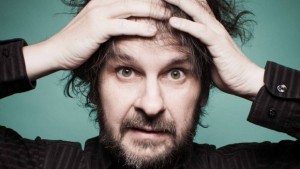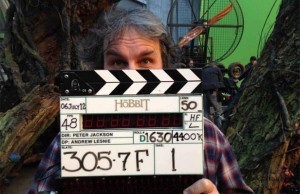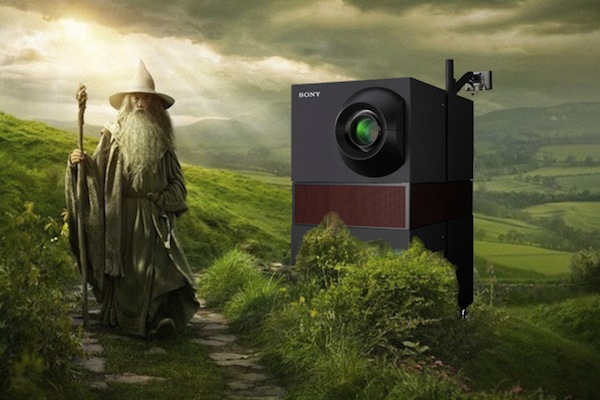Peter Jackson made a bold move when he boarded the James Cameron train and made the choice to shoot his return to Middle Earth in 48fps- for all his evangelizing, even Cameron himself hasn’t yet put a film out in a high-frame-rate (HFR) format. This means Jackson and his (now) trilogy will bear the brunt of the format’s early consumer scrutiny, the difficulty of that position already having been made evident by the hostile blogger and exhibitor reactions to the early test footage shown at CinemaCon.
 There was a stubborn, almost eye-rolling tone Jackson’s response to the controversy, as the director — who has been viewing 48fps footage every day for years now — chalked it all up to the short nature of the format, and the incomplete grading. Still, the tone was set when he made the decision to present The Hobbit to Comic Con in regular ole 24fps so the focus could remain on the content.
There was a stubborn, almost eye-rolling tone Jackson’s response to the controversy, as the director — who has been viewing 48fps footage every day for years now — chalked it all up to the short nature of the format, and the incomplete grading. Still, the tone was set when he made the decision to present The Hobbit to Comic Con in regular ole 24fps so the focus could remain on the content.
Turns out that’s going to be the general approach for the release of the film as well.
Though Jackson and co. have not yet commented officially, word from Variety is that Warner Brothers has planned an exceptionally limited 48fps release for this first Hobbit film, instead planning to scale up with future sequels based on audience response. There are no numbers, but the key phrase here is, “perhaps not even into all major cities.”
The piece goes into the usual tech talk about projectors and what’s currently out there and 48fps-ready, but ultimately not only is Warner Brothers “satisfied with the pace of efforts to ready theaters for HFR,” but the fact is that the hardware for 48fps is out there by the many thousands across the world. A simple software upgrade will make Sony’s 4K Cine Alta projectors –there are well over 10,000 installed across the world–capable of showing 3D 48fps prints (not in 4K though), and a manageably pricey processor upgrade will make many many thousands more Series 2 Christie projectors ready as well.
So all of this to say that WB’s gun shy release strategy is clearly a move to keep the focus of the first The Hobbit release to the film itself along with the public event of returning to Middle Earth (and billion dollar grosses!). As I elaborated in my CinemaCon reaction piece, there is no doubt WB could have the film playing in HFR in –at the very least– every major market. Consider it actually takes cost and effort to drop-frame the film back down to 24fps (which entails adding motion blur to each frame), this is definitely a strategic move, not a technology-driven decision. In fact, it’s a move that might suggest the studios have not been deaf to  years of nasty anti-3D sentiments and the general skepticism of “premium experiences” at the theater, and the willingness of film press and audiences to fixate a film’s narrative around these issues rather that the film itself.
years of nasty anti-3D sentiments and the general skepticism of “premium experiences” at the theater, and the willingness of film press and audiences to fixate a film’s narrative around these issues rather that the film itself.
Interestingly, the article also notes that the footage already “looks vastly better than the test footage shown this April” as post-production work has progressed. People don’t always realize that you can selectively add back in motion blur and otherwise grade 48fps footage to look more like “cinema,” creating a less jarring experience. So keep in mind that, aesthetically, no blogger, critic, or public audience member has really seen what this format is capable of doing.
Still, I’ve always been skeptical of the decision to make these particular films from this particular franchise in this particular genre the guinea pig for this technology. Looks like WB feels the same way and are going to make sure nothing distracts from their billion-dollar baby’s return to the throne…
